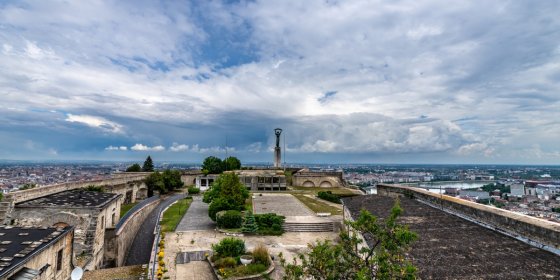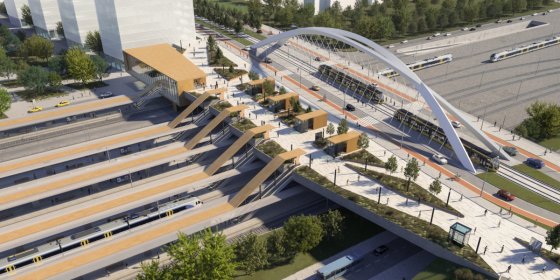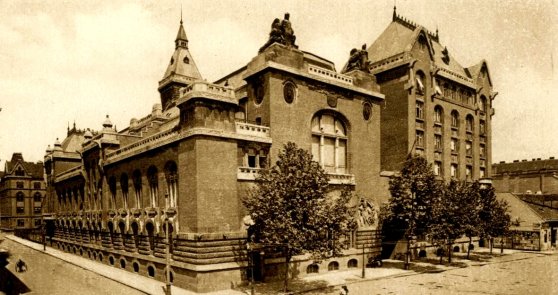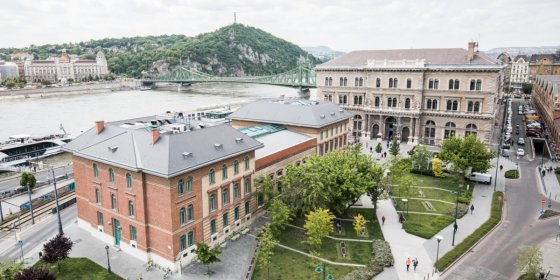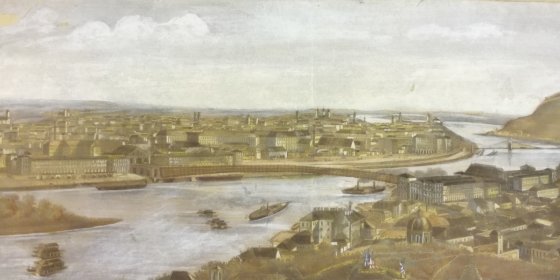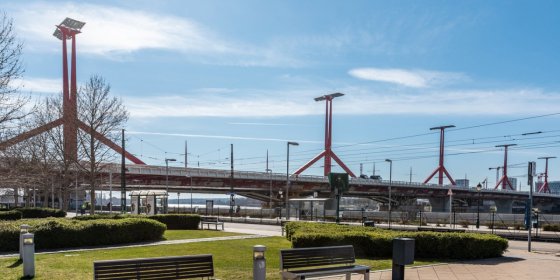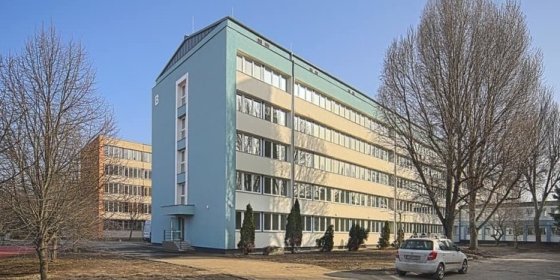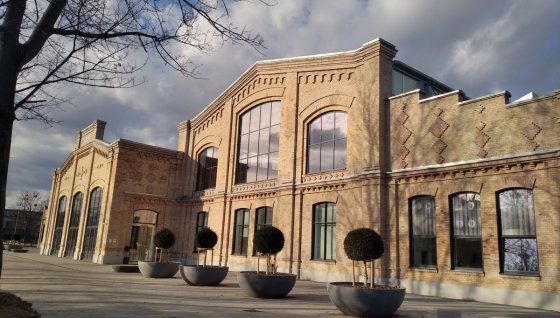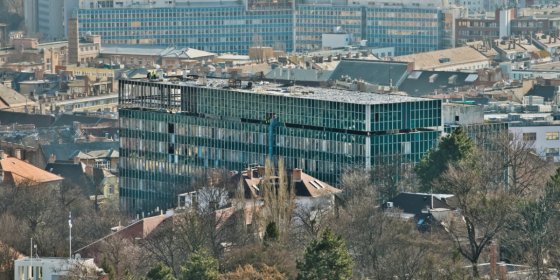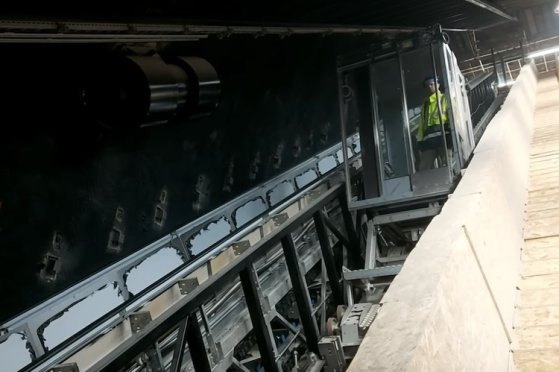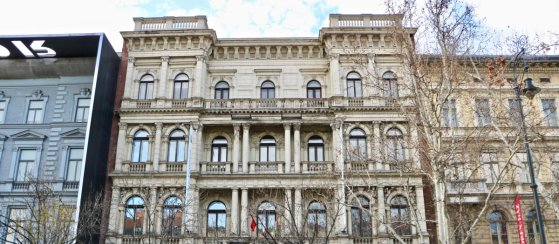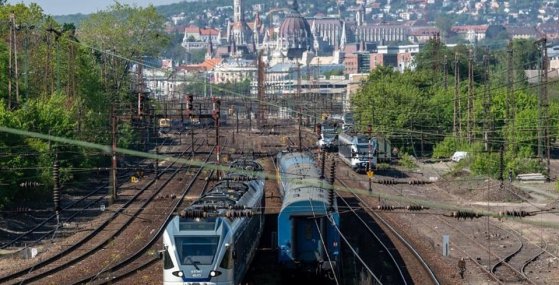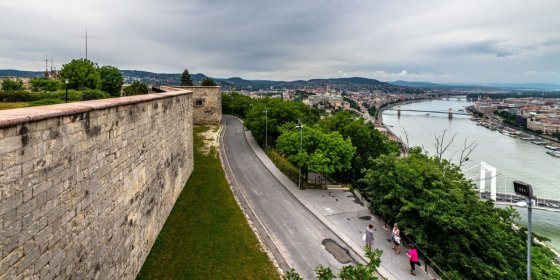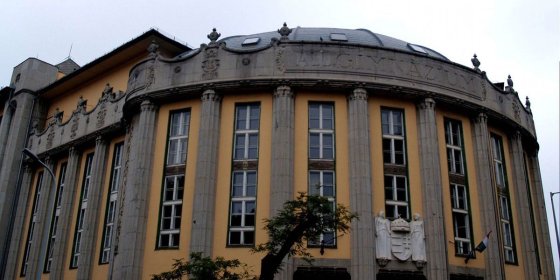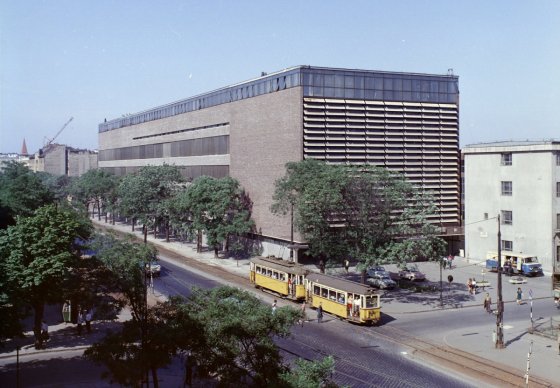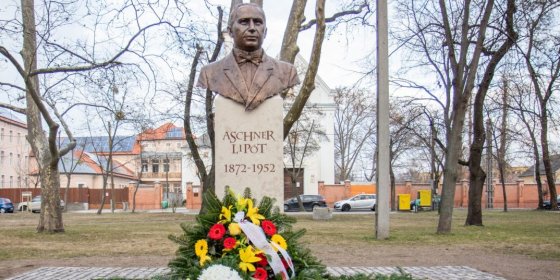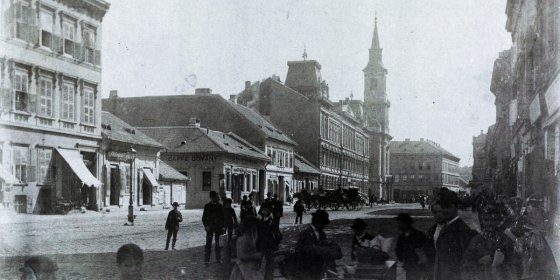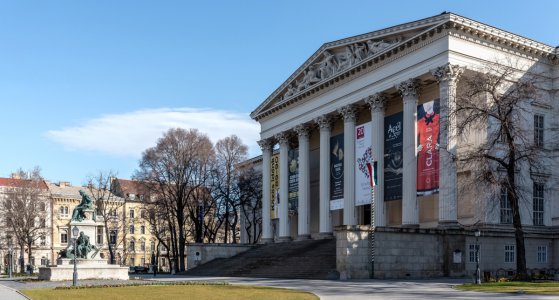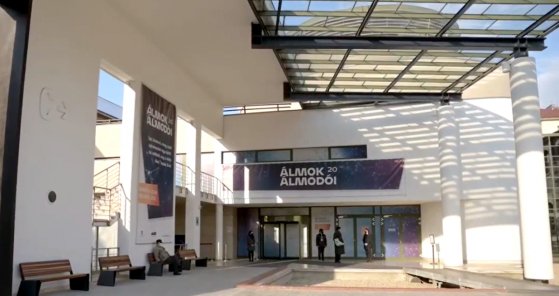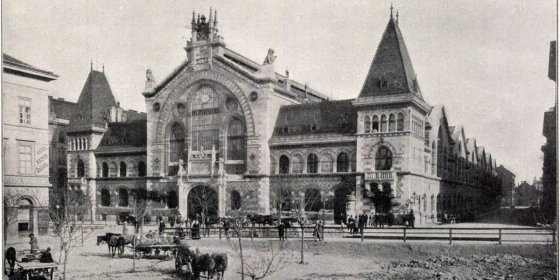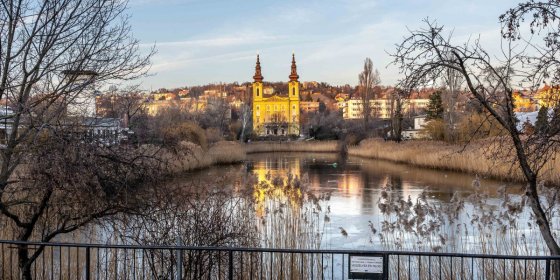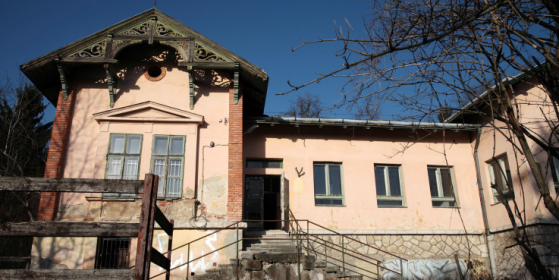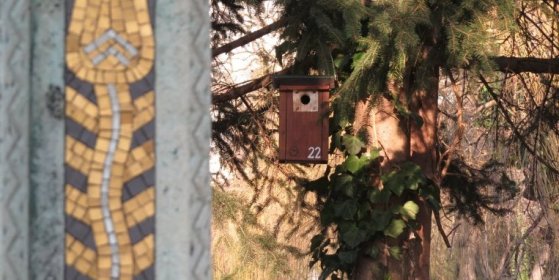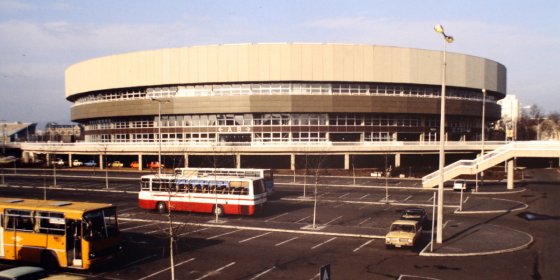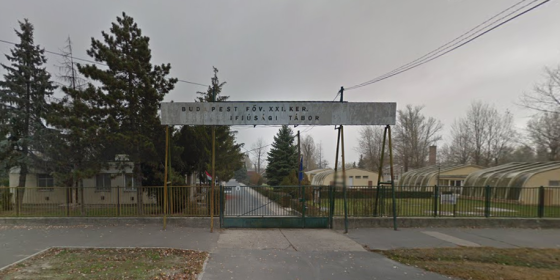 The „intertwined history” of the bridges and the city of Budapest
Which ideas and events have shaped the fate of bridges of Budapest and the cityscape? Alongside many other interesting facts, this question is also answered this newly published book by the Budapest City Archives, which introduces the history of bridges in Budapest.
The „intertwined history” of the bridges and the city of Budapest
Which ideas and events have shaped the fate of bridges of Budapest and the cityscape? Alongside many other interesting facts, this question is also answered this newly published book by the Budapest City Archives, which introduces the history of bridges in Budapest.
PestBuda
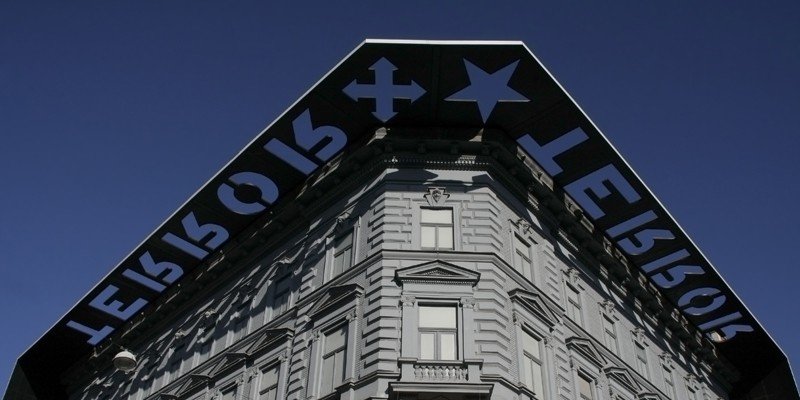 Hundred thousand people at the opening, millions at the exhibition - The House of Terror Museum opened 20 years ago
Hundred thousand people at the opening, millions at the exhibition - The House of Terror Museum opened 20 years ago
February 24, 2022 at 11:00 AM
20 years ago, on the eve of Memorial Day for the Victims of Communism, the House of Terror, the former Arrow Cross and then Communist torture house, opened at 60 Andrássy Avenue. The interest was huge, almost a hundred thousand people appeared at the opening to get acquainted with two terrible periods of Hungarian history.
The Ornithological Society held a habitat management on the Tétény Plateau
February 23, 2022 at 8:00 PM
The Hungarian Ornithological and Nature Conservation Association held the habitat management in the Tétény Plateau, one of the most locally protected habitats in the capital, mostly hiding steppe meadows. The site in the 22nd District has recently been cleaned of more than 4,000 tonnes of illegally dumped rubbish, but securing habitat for animal and rare plant species requires ongoing maintenance.
There is no cable car on Gellért Hill - The capital withdraws from the contract
February 23, 2022 at 4:30 PM
The local council of Budapest is withdrawing from the 2009 contract for the construction of the Gellért Hill cable car and the planned bus car park at the lower station. The reason for today's decision of the General Assembly of the Capital City was that more than thirteen years had passed since the entry into force of the contract, without any substantial construction work for the implementation of the investment under the contract having begun at all.
Visual plans for the surroundings of the car-free City Park have been completed
February 23, 2022 at 3:00 PM
The Budapest Development Center presented the transport development study plans of the surroundings of Városliget and the new road-tram overpass on Szegedi road and the related new Rákosrendező station. The aim of the developments is to make the surroundings of Városliget car-free, to close the Kós Károly promenade from traffic and to ban cars from Hősök square.
The Józsefváros Telephone Centre fit perfectly into the city, today it houses elegant hotels
February 23, 2022 at 9:00 AM
The incorporation of industrial buildings into the urban environment was an important urban development issue in the 1880s. On the one hand, they tried to move - in many cases relocate - the noisy large plants that often emit polluting substances farther from the city centre, and on the other hand, the leaders of the capital wanted to design the centres suitable for the development and service of public utilities and communications in such a way that they fit as closely as possible into the architecture of a given street or space. Fortunately for posterity, this intention has mostly produced eye-catching results, a good example of which is the József Telephone Centre.
The renovation of the Salt House on Fővám Square continues
February 22, 2022 at 4:30 PM
The 9th district Sóház renovation is continuing. Restoration of the south wing of the building used by Corvinus University has already begun last year, with more work being done in the north wing this year. The building behind the Main Customs House, designed by Miklós Ybl, will restore the main gates, the façade, the classrooms, the buzzer, the machinery and the electrical system.
The connection between Nyugati and Déli Railway Stations was also planned in the 19th century - now it is made underground
February 22, 2022 at 9:00 AM
In recent years, the idea has emerged to connect the Déli and Nyugati Railway Stations with a tunnel. The plan of the Budapest Development Centre is now one step closer to implementation, as a contract has been signed for the preparation of an environmental impact assessment of the connecting railway tunnel to be built under the Danube. The idea of connecting the Déli [Southern] and Nyugati [Western] Railway Stations, which are relatively close to each other, is not a new idea. It arose almost immediately after the opening of the Déli Railway Station in 1861, although an overground connection was still imagined at the time.
The government decided to build the Lágymányosi Bridge 30 years ago
February 20, 2022 at 9:00 AM
The government decided on today's Rákóczi Bridge, which for a long time was the youngest Danube bridge in Budapest, exactly 30 years ago, on 20 February 1992. A bridge was planned here as early as the 1960s, so the decision ended a very long, three-decade process. Construction of the bridge could then begin, which was completed in 1995, but the originally planned tram only crossed it in 2015.
The building of the Márton Áron Vocational College in Budapest was modernized
February 19, 2022 at 1:30 PM
The 518-seat building of the Márton Áron Vocational College was renovated in the 3rd district Kunigunda road. The institution was placed under the management of Eötvös Loránd University in 2016, and in that year the government decided on the HUF 15 billion renovation. The first element of this is the modernization of the now handed over dormitory. In recent years, there have been improvements and modernizations in all ELTE colleges.
Wonder in Kőbánya - We went to the Eiffel Art Studios
February 19, 2022 at 9:00 AM
The Eiffel Art Studios of the Hungarian State Opera is one of the new attractions of the 10th District and of the whole of Budapest. From the former Északi Járműjavító [Northern Locomotiv Workshop] of MÁV, it has become a cultural centre offering colourful programs, while also helping the operation of the Opera. Not only is the Art Studios [Műhelyház in Hungarian, meaning Workshop] interesting because of its complex function, but the recently completed renovation of the hall, originally built in 1886, has also been a great success.
The Ménesi road campus of Corvinus University is being demolished
February 18, 2022 at 6:00 PM
It can be clearly seen from the bank of the Danube in Pest that the Corvinus University Ménesi road campus is being demolished. A new university building will be built in its place, but the area is planned to remain an integral part of the city fabric. In the new building, which is expected to be completed next year, educational and research spaces, a dormitory, professor's apartments, community and representation rooms, as well as rooms suitable for sports and recreation will be established.
The downtown M3 metro stations will open in May with sloping lifts
February 18, 2022 at 4:00 PM
The three stations of the M3 metro line, Kálvin Square, Corvin and Semmelweis Clinics, will open in May. For the first time in Hungary, sloping tracks will be built on this metro line, which will provide passengers with easier transport at a total of six stations, the other three stops will be Ferenciek square, Arany János street and Nyugati railway station.
The builder, János Bobula, could live in one of the most beautiful palaces on Andrássy Avenue only for a few years
February 18, 2022 at 10:00 AM
"It is one of the most beautiful buildings on the avenua," said the contemporary press when 62 Andrássy Avenue, formerly known as Bobula Palace, was built in 1882-1883. Maybe it wasn't called that for no reason. The carefully designed building, the list of famous artists of the age, the unique furnishings all suggest that the praise was justified. Moreover, the building faithfully reflected the owner’s financial situation, social status, and architectural views. Although the house is known to everyone today as “a building next to the House of Terror,” Bobula’s Palace deserves much more than that.
The contract has been signed, the railway tunnel under the Danube has taken another step closer to completion
February 17, 2022 at 6:30 PM
The railway tunnel connecting Kelenföld with the Western Railway Station by touching Széll Kálmán Square will be of paramount importance, as it will bring a leap forward development in the agglomeration, within Budapest and connecting the regions. However, the development will have a significant impact on the environment, which is why an environmental impact assessment study needs to be carried out, the contract for which has just been signed. In addition to surveying the soil, caves and springs, the study will also cover whether or not the dust and noise exposure of the population will increase.
Markusovszky Square in Ferencváros can be renewed
February 17, 2022 at 3:30 PM
With resting benches, a new playground and a dog runner you can renew district Markusovszky Square, under which a 120-space underground garage can be built, but fifty trees will also be planted in the area, where the green area will also be increased. A comprehensive concept plan has been prepared for the development of the 9,000-square-meter space, and the visual plans are shown.
The pedestrian underpass and stairs of the Gellért Hill cable car can be built
February 17, 2022 at 1:00 PM
The company responsible for the development received a permit for the construction of the tunnel leading to the station of the future Gellért Hill cable car and the stairs leading to Hegyalja road. With this, the construction of the cable car to the Citadel, which is expected to be completed by the end of 2023, has taken another step closer to completion.
The Swan Song - Ödön Lechner's last building
February 17, 2022 at 10:00 AM
In recent days, the Szent László Grammar School in Kőbánya has appeared frequently in the media. Although it was only visible as the background of the events, the viewers may have noticed the special facade of the building and its unique decorative elements - this is explained by the fact that it was the last work of Ödön Lechner (the genius who created the Hungarian architectural form), and it was finished in the year of the master's death, in 1914.
The former Beloiannis factory and several other modern buildings in Újbuda may be under local protection
February 16, 2022 at 6:30 PM
Several modern buildings in the 11th district would be placed under local protection by amending the relevant decree in the capital. These are the blocks of the Beloiannisz Telecommunications Factory dated to 1962–1963, the former Vertesz office building handed over in 1963, or the residential building on the corner of Fehérvári road, Eszék street, completed in 1960.
Who Flourished Tungsram - Statue of Lipót Aschner, 150 years old, erected
February 16, 2022 at 3:30 PM
A statue of Lipót Aschner, born 150 years ago, was erected in Újpest. The bronze statue of the sculptor Dávid Tóth, the father of Hungarian light bulb production and development, the flourisher of the Tungsram brand, the president and patron of the Újpest Gymnastics Association (UTE), and the sculptor Dávid Tóth, was placed in Lipót Aschner Square in Újpest.
The renovated Opera House will reopen in March
February 16, 2022 at 1:30 PM
After a break of five seasons, the Hungarian State Opera House on Andrássy street will reopen on 12 March, now completely renewed. During the large-scale restoration and modernization, the facade of the Neo-Renaissance palace designed by Miklós Ybl was restored, the stage technology was modernized, the acoustics were improved, the orchestral trench was remodeled, and the public utility network of the Opera House was replaced. The house will open with a festive concert under the direction of Domác Plácido, Ádám Medveczky, Gergely Kesselyák and Balázs Kocsár.
Crowded homes, high mortality: the people of Pest did not have an easy life 150 years ago
February 16, 2022 at 10:00 AM
Today, we cannot imagine the misery of the people of Pest in certain parts of the city before the unification of the city. Nor was it rare, according to statistics from 150 years ago, for several families to live in a single room. Those living in a room crowded with 6 to 10 people died sooner, and the average life expectancy, even in the best parts of downtown, was less than 26 years. PestBuda's article reveals that the misery was great, especially in Ferencváros and Józsefváros, but the situation did not improve in the other districts of the capital for a long time.
In the future, we will also be able to see the exhibitions of the National Museum in the Castle Garden Bazaar
February 15, 2022 at 7:00 PM
From now on, the National Museum will hold at least two exhibitions a year in the Castle Garden Bazaar in co-operation with the Várkapitányság. The exhibition entitled The Hungarian Bride will be held in two locations, in the Museum building and in the Castle Garden Bazaar.
The new exhibition of the Millenáris presents the inventions of world-famous Hungarians
February 15, 2022 at 2:00 PM
The exhibition of the history of science entitled The Dreamers of Dreams 20 - World-Speaking Hungarians, Hungarian Inventions will be presented on the Millenáris from 6,000 square meters on a 1.5-kilometer route. The history of Hungarian transport, medicine and life sciences, infocommunication come to life, but visitors can also learn about significant Hungarian developments in the industrial and energy sectors. The aim of the exhibition is to show that Hungarians were not only successful in the past, but still have these qualities.
Market halls, which have been handed over 125 years ago, have become the sights of Budapest
February 15, 2022 at 10:00 AM
Modern food supply was one of the important factors in the development of Budapest into a world city. City management found it essential to have indoor, health-friendly stalls, constantly monitored inventory, fixed prices, and fixed opening hours, but little or no open-air markets could meet these conditions. The market halls were designed to regulate all this: the Central Market Hall on Fővám Square, the Rákóczi Square, the Klauzál Square, the Hunyadi Square and the Hold Street Market opened on 15 February 1897, just 125 years ago.
The park of the Bottomless Lake can be named after Mari Törőcsik
February 14, 2022 at 5:00 PM
Although several locations in Újbuda were mentioned, in the vote that has just ended, more than 50 percent of voters have chosen to have the park around the Bottomless Lake named after Mari Törőcsik in the future. The actress, who died in 2021, lived in the 11th district, and in 2016 he was awarded the title of honorary citizen. However, in order for the park around the Bottomless Lake to take the name of Mari Törőcsik, it is still necessary for the decision of the district representative body and the approval of the General Assembly of the Capital City.
The keys to Villa Haggenmacher were handed over, and the building was saved
February 14, 2022 at 2:00 PM
The Hungarian State exercised its right of pre-emption and purchased the 12th district Haggenmacher villa, which was once replaced by the Eye of God inn. The keys were handed over in days. The valuable monument will therefore remain in the public domain and will be used for community purposes after the renovation.
Chain Bridge candelabras: oil lamps shine when handed over, now LED lighting is being installed
February 13, 2022 at 11:00 AM
We signed a contract with the Moon for the lighting of the Chain Bridge: this is how the front page of a funny paper complained in in the middle of the 19th century that the visibility on the first bridge in the capital was poor. The candelabras of the Chain Bridge, currently under renovation, will be restored to their 1914 condition, but will be equipped with energy-saving LED lights. Since the handover of the bridge in 1849, the lighting has changed several times, these are shown below.
This is how they help the birds in the graveyard on Fiumei Road
February 12, 2022 at 2:00 PM
The Hungarian Ornithological and Nature Conservation Association together with the National Heritage Institute (NÖRI) established a bird sanctuary in the graveyard on Fiumei road. The 25 burrows and the feeder are of great help to the nearly 100 species of birds that live here and 40 that breed here, including pine woodpeckers, specimens of which winter in flocks through the trees in the graveyard.
It was the largest indoor sports facility in Hungary but it burned down - The Budapest Sports Hall was handed over 40 years ago
February 12, 2022 at 9:00 AM
Forty years ago, the largest indoor sports hall in Hungary at that time, the Budapest Sports Hall with 12,000 seats, was handed over to the public. The huge building hosted world competitions in many sports, but many Hungarian and world-famous foreign bands and performers, such as Iron Maiden, Metallica, Deep Purple, Elton John and Tina Turner, also performed here. The building was completely burned down in 1999, demolished and replaced by the Papp László Sports Arena.
The youth camp in Csepel is being renovated
February 11, 2022 at 2:00 PM
At the request of the people of Csepel, a family leisure park would be established in the 21st district Hollandi road youth camp, i.e. the site of the old pioneer camp. The local council wants to design the site together with the people of Csepel, tailored to the needs of the people living in the district, so it published a questionnaire and held a public forum. The concept plan is based on the responses and ideas received. The leisure park would be created as part of the developments along the Kis-Danube.
More articles
 The „intertwined history” of the bridges and the city of Budapest
Which ideas and events have shaped the fate of bridges of Budapest and the cityscape? Alongside many other interesting facts, this question is also answered this newly published book by the Budapest City Archives, which introduces the history of bridges in Budapest.
The „intertwined history” of the bridges and the city of Budapest
Which ideas and events have shaped the fate of bridges of Budapest and the cityscape? Alongside many other interesting facts, this question is also answered this newly published book by the Budapest City Archives, which introduces the history of bridges in Budapest.
 The Bridge Report, which brought a turning point in the history of Budapest
A travel report that changed the history of Pest and Buda, as well as Hungary. The little book contributed to the change of half a thousand years of legal customs and the implementation of an investment of unprecedented size and technical quality. This book was The Bridge Report [Hídjelentés in Hungarian].
The Bridge Report, which brought a turning point in the history of Budapest
A travel report that changed the history of Pest and Buda, as well as Hungary. The little book contributed to the change of half a thousand years of legal customs and the implementation of an investment of unprecedented size and technical quality. This book was The Bridge Report [Hídjelentés in Hungarian].
 Drama on the university wall - The heroic monument was planned 95 years ago
In the constant hustle and bustle of the Egyetem Square in Pest, the students may not even notice the monument that decorates the short section of wall between the church and the central building of ELTE. However, it commemorates their predecessors, the heroes who fought for their country in World War I, and those who heroically helped them. The first design of the dramatically collapsing soldier was born in 1928, ninety-five years ago.
Drama on the university wall - The heroic monument was planned 95 years ago
In the constant hustle and bustle of the Egyetem Square in Pest, the students may not even notice the monument that decorates the short section of wall between the church and the central building of ELTE. However, it commemorates their predecessors, the heroes who fought for their country in World War I, and those who heroically helped them. The first design of the dramatically collapsing soldier was born in 1928, ninety-five years ago.


